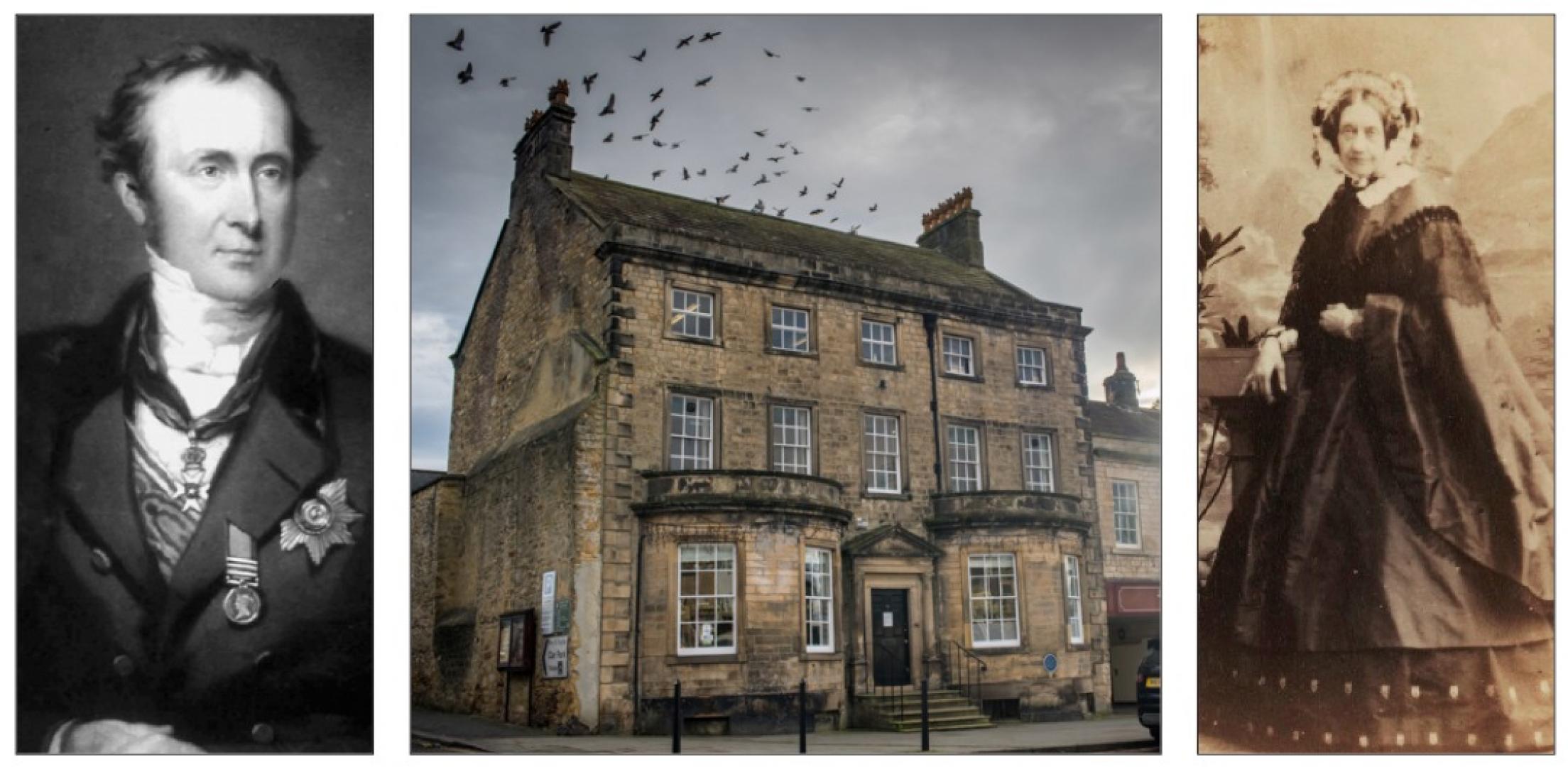Teesdale U3A member Rose Pude tells the story of Charlotte Murchison and why she deserved a blue plaque as much as her husband who found fame in geology
I AM sure many of you have walked down Galgate and briefly glanced at the blue plaque on the wall of number 21 which says: “Formerly the residence of Sir Roderick Murchison, twice President of the Royal Geographical Society, he died in 1871, aged 79. A great geologist and explorer. A town in New Zealand, falls on the Nile, a mountain range and river in Australia and a sound in Greenland are all named after him.”
His wife, Charlotte, is not mentioned, although she also lived in the house.
I became interested in the family background and life of Charlotte while working with some friends preparing a talk about Roderick Murchison for the Teesdale U3A geography group. It was clear that without her encouragement and assistance Roderick would never had taken up the study of geology and attained fame and fortune as one of the most eminent Victorian geologists.
But when and why did they live in Barnard Castle? These questions are easy to answer. After a long honeymoon in France, Switzerland and Italy, the couple moved into 21 Galgate in 1818. They stayed here until 1824 when they moved to London to make it easier for Roderick to pursue a career in geology.
Charlotte’s paternal grandfather, James Hugonin, died in 1817. He had owned and occupied a property in Barnard Castle, presumably 21 Galgate, since 1783 or earlier. On his death his assets, including the house, passed to his son, Francis Hugonin. Francis had lived on and managed the family estate in Hampshire for many years so he would not be interested in moving to Barnard Castle. Roderick and Charlotte needed somewhere to live so they moved into the house.
But why had James acquired a house in Barnard Castle and lived there with his wife, Isabel, after he retired from the army?
This was a mystery until my husband found on the internet a book of the baptism, marriage, and burial records of Durham Cathedral.
He searched the name Pude to see if any ancestors were mentioned. Then he searched for Hugonin and to our surprise there was a footnote added to the marriage record of George Edwards, of Barnard Castle, in July 1724. This stated that George Edwards was the son of another George Edwards, a tanner in Barnard Castle. By his first marriage to Isabel Dennison, he was the father of Isabel Edwards who had married General Hugonin of the 4th Dragoons. Isabel Edwards was baptised in St Mary’s church, Barnard Castle, in January 1722.
So, Charlotte’s grandfather, James, had connections with Barnard Castle through his wife’s family.
His father-in-law must have been wealthy to have been able to get married in Durham Cathedral.
While living in Barnard Castle, Roderick showed no interest in geology or any other intellectual pursuit.
Instead he devoted much time and money to fox hunting. Charlotte, on the other hand, studied the local rocks and made sketches of them. It was her influence that made Roderick decide, after many years of pursuing pleasure, to take up
geology.
Charlotte not only encouraged him but also accompanied him on field trips, gathered specimens and made sketches of fossils and geol-ogical features. Her drawing of a fossil she found in Skye was included in the book “Mineral Conchology of Great Britain” by the scientist James Sowerby. He named it ammonites murchisoniae after her.
After inheriting a substantial sum of money from her mother in 1838 Charlotte and Roderick bought a grand house in Belgrave Square – then as now one of the most prestigious addresses in London. Charlotte’s skills as a hostess enabled them to entertain on a lavish scale which helped promote Roderick’s career.
Unusually for the time, Charlotte’s import-ance in Roderick’s career was recognised during her lifetime. Had there been more opportunities for women to study and pursue a career in the 19th century I am sure Charlotte would have been an eminent geologist herself.
She deserves a blue plaque for her achievements as much as her husband does. Her family connections with Barnard Castle should be better known.
Rose Pude






